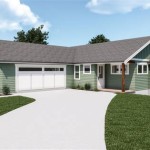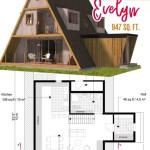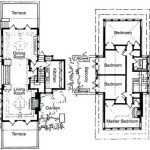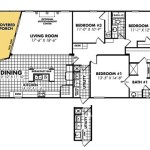Small House Open Floor Plans: Maximizing Space and Fostering Connection
In the realm of home design, open floor plans have become increasingly popular, particularly for small houses. By eliminating unnecessary walls and barriers, open floor plans create a sense of spaciousness, improve flow, and encourage social interaction. For small houses, open floor plans are a godsend, as they can make a compact space feel larger, brighter, and more inviting.
Open floor plans are characterized by a seamless integration of different functional areas within a single, open space. This layout typically includes a combination of the kitchen, dining room, and living room, all flowing seamlessly into each other. By eliminating walls, open floor plans create a sense of transparency and visual connection throughout the home.
For small houses, the benefits of open floor plans are undeniable. First and foremost, they maximize the use of available space. By removing walls, open floor plans eliminate unused corners and create a more efficient layout. This can be especially beneficial in compact homes, where every square foot counts.
Secondly, open floor plans improve the flow of movement within the home. Without walls obstructing the path, people can move freely between different areas, making daily activities more efficient and enjoyable. This is particularly advantageous for families with young children or individuals with mobility challenges.
Moreover, open floor plans foster a sense of connection and community. By removing the barriers that often divide rooms, open floor plans encourage interaction and communication between family members and guests. This creates a welcoming and inclusive atmosphere that promotes social well-being.
When designing an open floor plan for a small house, it's important to consider the following principles:
- Minimize clutter: Open floor plans can easily become cluttered and visually overwhelming. Choose furniture and décor that is proportionate to the space and avoid excessive use of decorative items.
- Create distinct zones: While open floor plans encourage fluidity, it's still important to define different functional areas. Use rugs, furniture placement, or subtle changes in flooring to create a sense of separation between the kitchen, dining room, and living room.
- Maximize natural light: Open floor plans rely heavily on natural light to create a sense of spaciousness. Incorporate large windows and skylights to flood the home with sunlight and make it feel more inviting.
- Consider acoustics: Open floor plans can be prone to noise transmission. Use sound-absorbing materials, such as rugs, curtains, and upholstered furniture, to mitigate noise levels.
- Personalize the space: Open floor plans can feel impersonal if not properly personalized. Add personal touches, such as artwork, family photos, and plants, to make the space feel like home.
By adhering to these principles, you can create a small house open floor plan that maximizes space, fosters connection, and enhances the overall quality of life.

10 Small House Plans With Open Floor Blog Homeplans Com

10 Small House Plans With Open Floor Blog Homeplans Com

10 Small House Plans With Open Floor Blog Homeplans Com

Open Concept Two Bedroom Small House Plan Other Examples At This Link Plans Tiny Floor Sims
10 Small House Plans With Open Floor Blog Homeplans Com

Small Cottage House Plans With Modern Open Layouts Houseplans Blog Com

Free Editable Open Floor Plans Edrawmax

Small House Plan Examples

Pros And Cons Of Open Concept Floor Plans

10 Small House Plans With Open Floor Blog Homeplans Com








